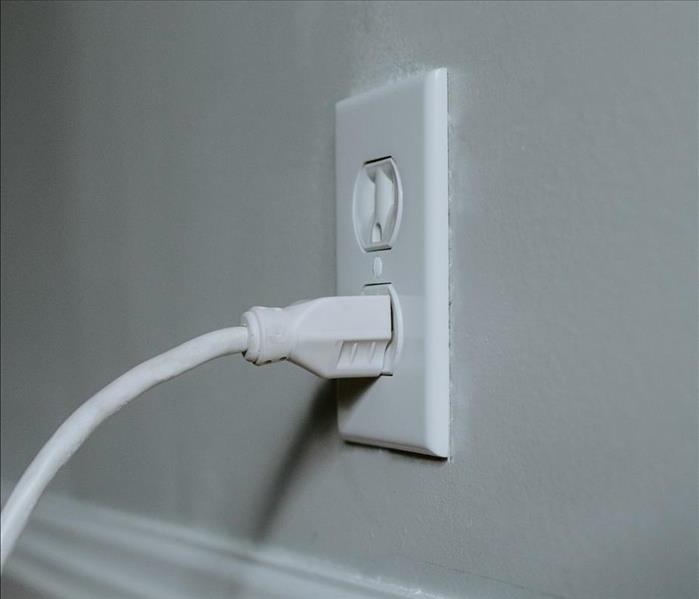Understanding Electrical Outlet Guidelines
5/12/2021 (Permalink)
We’ve all had that moment, electrical cord in hand, wondering, “Can I plug this in here?” We weigh the pros and cons of plugging a hefty number of cords into one outlet or filling an extension cord. Just one more shouldn’t make that much of a difference, right? According to the National Fire Protection Agency, the second leading cause of fires in homes between 2012 and 2016 was electronic malfunctions. In the moments when we desperately need to charge our phones or laptops, however, it is important that we remember the consequences of taking risks with electrical outlets and seek clarification. How many cords is too many? How can we ensure that we are protecting our homes from electrical fires?
Statistics About Electrical Fires
First, developing an understanding of the causes of electrical fires in residences is crucial in order to prevent such fires from occurring. In 2018, FEMA published a report on Residential Building Electrical Fires between 2014 and 2016, in which it was concluded that electrical wire was often one of the first items to catch fire in residential building electrical fires. Additionally, outlets and receptacles accounted for 12 percent of the electrical fires ignited, while extension cords also resulted in 5 percent of these fires. Therefore, exercising caution when interacting with electrical wires, cords, and outlets, is key in protecting your home from the dangers of electrical fires.
Guidelines
The FEMA report also outlines a number of guidelines concerning fire safety when interacting with appliances, outlets, and extension cords.
Appliances
The report asserts that appliances, which range from refrigerators and washing machines to microwaves, should only be plugged directly into wall outlets. It also suggests that the electrical cords and wires used with appliances be closely monitored, as the faster you can identify damage, such as cracking or loosening, the better you can prevent an electrical fire.
Outlets and Extension Cords
When interacting with outlets, be sure to never overload an outlet with more plugs than it is designed to handle. That being said, electrical cords should also always be fully inserted into sockets and three-pronged cords should never be forced into a two-prong outlet. It is especially important to never overload extension cords, as they are only intended to serve as temporary power sources. You can often find out about an extension cord’s capacity by checking its packaging. The report also suggests using extension cords that possess internal overload protection in case of an accident.
Where SERVPRO Can Help
Even with our best efforts, electrical fires can ignite unexpectedly as a result of an accident or emergency. Here at SERVPRO of Hunt Valley and Harford County, we understand just how stressful residential fires can be. You can trust our reputable Fire Services to help restore your home to its preloss condition, making the fire “Like it never even happened.” Learn more about our Fire Restoration Process and check out our other fire-related website content, such as our Fire Damage Tips, which can help guide you through the appropriate steps to take after a fire emergency. If your home experiences a fire, call SERVPRO of Hunt Valley and Harford County immediately at (410) 229-0012.





 24/7 Emergency Service
24/7 Emergency Service
